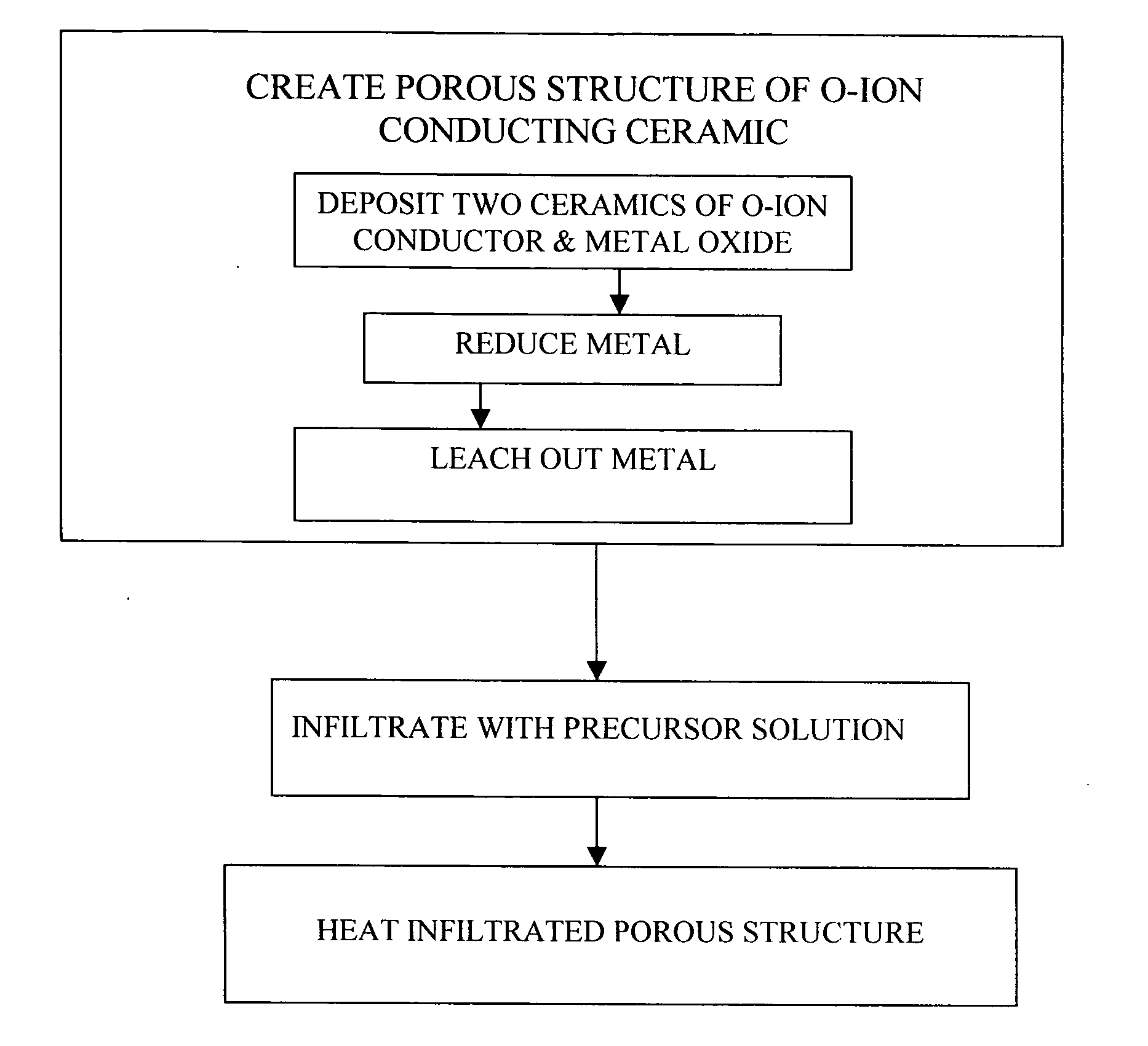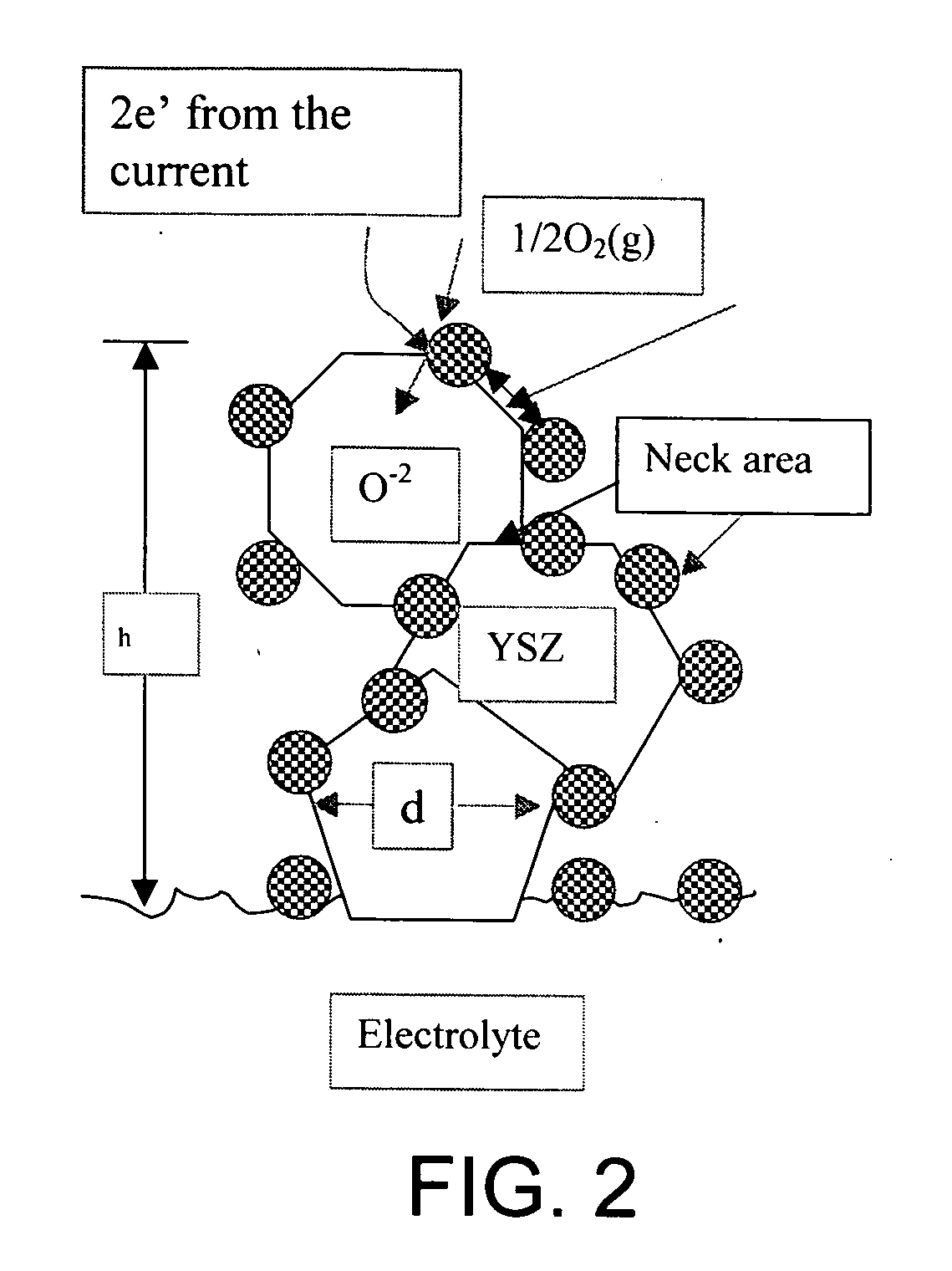Method of fabricating composite cathodes for solid oxide fuel cells by infiltration
a solid oxide fuel cell and composite cathode technology, applied in the direction of cell components, final product manufacturing, sustainable manufacturing/processing, etc., can solve the problems of limited performance of electrolyte-supported cells, limited cathode-supported cells, limitations of this method of fabrication, etc., to reduce overpotential losses, increase the overall performance of solid oxide fuel cells, and substantial porosity
- Summary
- Abstract
- Description
- Claims
- Application Information
AI Technical Summary
Benefits of technology
Problems solved by technology
Method used
Image
Examples
example
[0082] This example illustrates an embodiment of the present invention. In this example, a two-phase ceramic consisting of NiO and YSZ is deposited on the surface of the electrolyte where the cathode is intended, by applying a NiO and YSZ mixture and sintering. While the sintering temperature, about 1400° C., is high, the presence of the two phases inhibits grain growth and thus prevents over-coarsening of the microstructure.
[0083] The NiO—YSZ ceramic is exposed to a hydrogen environment at high temperature in order to reduce the NiO and thus form a Ni—YSZ cermet. The Ni is subsequently leached out with a dilute acid leaving behind a highly porous YSZ structure. The porous structure is then infiltrated with a solution containing La, Sr, and Mn nitrates and fired at low temperatures (500-800° C.) to form LSM. The result is a porous composite cathode consisting of LSM and YSZ. Alternatively, the porous YSZ structure can be fabricated by depositing a layer of YSZ containing a pore for...
PUM
| Property | Measurement | Unit |
|---|---|---|
| temperature | aaaaa | aaaaa |
| temperature | aaaaa | aaaaa |
| temperatures | aaaaa | aaaaa |
Abstract
Description
Claims
Application Information
 Login to View More
Login to View More - R&D
- Intellectual Property
- Life Sciences
- Materials
- Tech Scout
- Unparalleled Data Quality
- Higher Quality Content
- 60% Fewer Hallucinations
Browse by: Latest US Patents, China's latest patents, Technical Efficacy Thesaurus, Application Domain, Technology Topic, Popular Technical Reports.
© 2025 PatSnap. All rights reserved.Legal|Privacy policy|Modern Slavery Act Transparency Statement|Sitemap|About US| Contact US: help@patsnap.com



